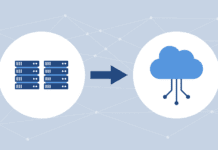We have all heard for years about tiered data storage for disk arrays. Tier 1 is usually enterprise disk, which was once Fibre Channel but more and more is becoming SAS. Tier 2 is typically enterprise SATA, while tier 3 might be consumer-grade drives. And the last year or two has seen the rise of a tier 0 for flash-based solid state drives (SSDs).
There are big differences between each of the tiers in terms of reliability, performance, data integrity and cost, especially for tier 0 SSDs. Here is a quick review of some of the major differences between the disk tiers:
|
This table does not include SSDs, of course, which have a wide range of reliability and performance and might need their own tiers.
The data storage networking industry has been moving strongly toward disk tiers, but has anyone given any thought to doing the same for tape? I was talking with an executive of a tape company about a customer who was looking at changing from all enterprise tape to all LTO tape. This customer had tier 1 enterprise disks for things like databases, tier 2 enterprise SATA disks for larger bulk storage, and tier 3 SATA disks for desktop and laptop systems, and yet was about to move everything to the tape equivalent of tier 2. Which got me wondering: Why don’t storage customers use tape tiers? The answer also sheds some light on why high-end tape storage is a declining market despite being the most reliable enterprise storage media, many times better than disk drives.
Enterprise Tape: As Reliable as It Gets
We all know what enterprise disk is, and we don’t question that some disk types offer greater performance and reliability than others, but tape doesn’t get nearly the same consideration. Even LTO tape has a much better bit error rate (BER) than enterprise disk, 1 bit in every 10E17 bits. That is 40,960 times greater than enterprise disk, which is 1 sector (512 bytes) in 10E16 bits of data transferred.
The published specifications from Oracle (NASDAQ: ORCL) — which is one of two enterprise tape vendors, with IBM (NYSE: IBM) the other — is 1 bit in every 10E19 bits of data transferred, or 4,096,000 times better than enterprise disk. So one question for tape users is why aren’t both types of tapes used in a tiered tape approach, just as both types of disks are used? Everyone knows that enterprise disks fail; if they didn’t, we would all be using something like RAID-0 for streaming performance or RAID-1 for IOPS performance.
From a reliability perspective, LTO is far better than disk, but with the amount of data soaring and bit error rates remaining stagnant, failures are going to become more common for both disk and tape. So why don’t people use both types of tape to combine data reliability and cost savings, just like disk users do?
Obstacles to Tape Tiering
I had to think long and hard for reasons why sites would not use both tape types, and I came up with two reasons: library support for enterprise tape drives, and a lack of standards for enterprise tape.
Tape library support: More likely than not, if you buy a library from someone other than IBM or Oracle, the only tape drives that will be supported will be LTO drives. In addition, you will not find IBM libraries supporting Oracle drives, nor IBM drives in an Oracle library. The qualification for tape drives within a library cannot be easily accomplished without the consent and help of a vendor, and why would IBM or Oracle want to help a competitor sell libraries? So what ends up happening is that enterprise tapes are only available from enterprise tape drive vendors in their own libraries, which leads to a lack of competition for drives in tape libraries.
Enterprise tape standards: When IBM developed the original 3480 tape cartridge, which in my opinion was the starting point for enterprise tape, that technology became synonymous with tape. Everyone wanted to copy that form factor and format, and that’s what they did. IBM compatible tapes were the only enterprise tape, even though there were plenty of enterprise disk vendors.
With several different enterprise disk vendors, there was a clear effort to define differences. By the late 1980s, the SCSI standard was released, and soon thereafter IDE, which eventually became the ATA standard and then SATA. It became clear by the 1990s that the standard for enterprise drives in open systems was 3.5-inch SCSI drives.
SCSI is a standard with a standards body, as is SATA, unlike IBM enterprise tape, which is not open, and when StorageTek got into the enterprise tape business with its own drives in the late 1990s, their products were not an open standard, and as part of Oracle, StorageTek enterprise tape is still not an open standard. LTO, on the other hand, is an open standard, with multiple vendors and interoperability between tapes, tape drives and open source tape applications. This will never be the case for tape from IBM and Oracle.
So you have two non-standard enterprise tapes, a standards-based non-enterprise tape, and standards-based disk drives for enterprises and consumers. It is no wonder that enterprise tape faces challenges and users don’t understand the differences.
The cost difference between enterprise tape drives and LTO is significant, with enterprise drives costing four to six times more than LTO drives. And whether you get an enterprise drive for $30,000 or an LTO drive for $5,000, the media will cost you even more over time.
Despite a lack of standards for enterprise tape, it still has significant advantages for very large storage environments because of its better cartridge and drive construction, better error correction coding (ECC) and a host of other features that are better than LTO.
So the question remains, why do storage users not have a mix of technologies for tape as they do for disk? I think the real reason is that enterprise tape is not an open standard and never will be, so if you go the enterprise route, you are limited to one provider for your drives, a limited set of providers for your media, and likely a single provider for your libraries. In an ideal world, enterprise tape would be used similarly to the way that enterprise disk drives are used, for high reliability, high random usage and high duty cycles. But enterprise tapes will continue to struggle to differentiate themselves from LTO until they become an open standard, like disk drives and LTO. The likelihood of that happening is slim, however, leaving one more — and unnecessary — reason for the continuing decline of the tape storage market.
Henry Newman, CTO of Instrumental Inc. and a regular Enterprise Storage Forum contributor, is an industry consultant with 28 years experience in high-performance computing and storage.
See more articles by Henry Newman.
Follow Enterprise Storage Forum on Twitter





